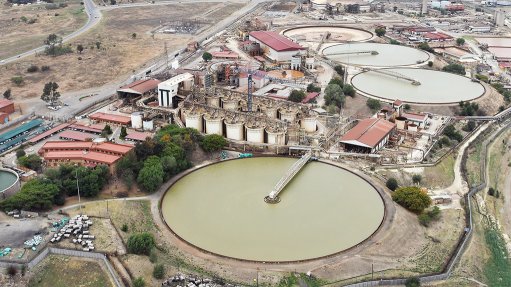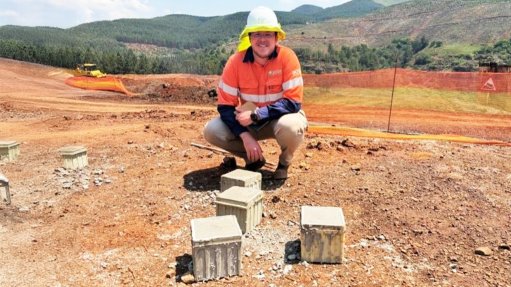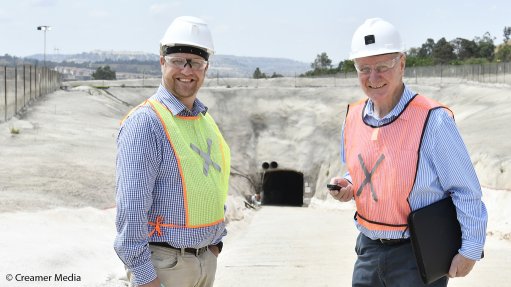Mobility to be first use of green hydrogen in African mines
Mobility and heavy-duty vehicles are the first to use green hydrogen on mines and this is expected to be the area of first broad-scale application, including for rail, aviation and shipping fuels, a panel of specialists said during the 'Why green hydrogen for African mines' session of the Energy and Mining Summit on February 23.
Department of Science and Innovation (DSI) Hydrogen South Africa Infrastructure national centre of competence director Professor Dmitri Bessarabov noted that about half of global greenhouse-gas emissions were produced owing to the activities of about 50 large companies, which include mining and heavy-duty companies, and were mainly the result of heavy-duty transport, energy-intensive processes or energy companies.
"It makes economic sense to move heavy-duty fleets and long-haul to hydrogen owing to weight constraints of battery electric vehicles and I expect hydrogen-based long-distance freight and heavy-duty hauling applications to be realised sooner than other uses.
"This is an enabler, because heavy-duty fleets on mines are typically similar, and successes in one area of the world can be replicated to other areas, which can help to drive a big push for the technology," he said.
DSI hydrogen and energy chief director Rebecca Maserumule concurred, highlighting that near-term applications of hydrogen in mining include hydrogen mobility projects, such as that undertaken by mining major Anglo American at its Mogalakwena platinum group metals mine, in Limpopo.
The DSI and Hydrogen Valley partners are aiming to scale up green hydrogen production and consumption. With the available infrastructure, the mine may produce sufficient green hydrogen for its own uses and possibly two other mines in the area, she said, citing a study co-funded by Anglo American launched in October, she says.
"If we can secure sufficient offtake, it is likely that we can drastically reduce costs to produce green hydrogen. Heavy-duty trucks, as well as road freight and other materials handling equipment can also be shifted to hydrogen, and the Hydrogen Valley could see about one-third of domestic demand as a hub."
BARRIERS AND EARLY RISKS
However, the cost of green hydrogen compared with conventional sources is too high currently to be absorbed into mines' operational expenses. As there are no mechanisms for mines to recoup costs if they use hydrogen technologies, and with limited incentives from government, investment decisions in green hydrogen would likely falter, said chemicals and energy multinational Sasol sustainability senior manager Viran Pillay.
"This situation is not ideal, and we must work to overcome the cost barrier as an important step for green hydrogen adoption," he said.
Further, ideally there should be infrastructure in place such that green hydrogen is readily available. South Africa is far from this ideal, because there is no reticulation between large, centralised demand centres to provide economies of scale, which can make it more cost-effective for mines to use, he added.
"The lowest barrier to adoption would be if drop-in solutions can be used. This would remove the need to switch infrastructure and various equipment," said Pillay.
Meanwhile, the tipping point for hydrogen would be its broad acceptance as a fuel, and this must come with standards and codes. This is why the World Bank launched a study in Chile, along with Chilean institutions and companies, to determine safety standards, said Bessarabov.
"Once this is done, heavy-duty use will follow soon after and then scaling up is important. The cost of hydrogen production, especially of green hydrogen production on site, decreases with increases in the scale of electrolysers," he added.
Mining companies are building collaborations and networks across the globe and forming consortia to look at the use of hydrogen on mines and safety standards.
"Mines should also be watching the developments of the use of hydrogen in rail transport. Rail transport is similar in many ways to open pit mining, and many of the systems used can have applications in the mining sector.
"It costs a lot to run trains when there is low demand and it therefore makes sense to use hydrogen-powered trains, especially on longer routes. Heavy-duty haul vehicles in mining can adopt a similar approach to rail, not least because their hauling routes are fixed and therefore suitable for similar innovations with the potential to reduce costs," he explains.
The mining sector should continue to increase collaboration and must also define for suppliers and equipment providers what their needs and demands are in terms of hydrogen equipment, said Bessarabov.
Article Enquiry
Email Article
Save Article
Feedback
To advertise email advertising@creamermedia.co.za or click here
Press Office
Announcements
What's On
Subscribe to improve your user experience...
Option 1 (equivalent of R125 a month):
Receive a weekly copy of Creamer Media's Engineering News & Mining Weekly magazine
(print copy for those in South Africa and e-magazine for those outside of South Africa)
Receive daily email newsletters
Access to full search results
Access archive of magazine back copies
Access to Projects in Progress
Access to ONE Research Report of your choice in PDF format
Option 2 (equivalent of R375 a month):
All benefits from Option 1
PLUS
Access to Creamer Media's Research Channel Africa for ALL Research Reports, in PDF format, on various industrial and mining sectors
including Electricity; Water; Energy Transition; Hydrogen; Roads, Rail and Ports; Coal; Gold; Platinum; Battery Metals; etc.
Already a subscriber?
Forgotten your password?
Receive weekly copy of Creamer Media's Engineering News & Mining Weekly magazine (print copy for those in South Africa and e-magazine for those outside of South Africa)
➕
Recieve daily email newsletters
➕
Access to full search results
➕
Access archive of magazine back copies
➕
Access to Projects in Progress
➕
Access to ONE Research Report of your choice in PDF format
RESEARCH CHANNEL AFRICA
R4500 (equivalent of R375 a month)
SUBSCRIBEAll benefits from Option 1
➕
Access to Creamer Media's Research Channel Africa for ALL Research Reports on various industrial and mining sectors, in PDF format, including on:
Electricity
➕
Water
➕
Energy Transition
➕
Hydrogen
➕
Roads, Rail and Ports
➕
Coal
➕
Gold
➕
Platinum
➕
Battery Metals
➕
etc.
Receive all benefits from Option 1 or Option 2 delivered to numerous people at your company
➕
Multiple User names and Passwords for simultaneous log-ins
➕
Intranet integration access to all in your organisation


















